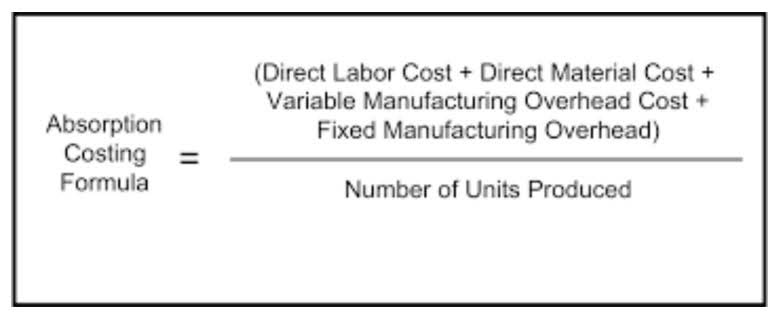
In fact, QuickBooks’ Entrepreneurship in 2025 report found that 61% of business owners consider inflation a major obstacle to growth, which means managing overhead is more important than ever. Because the entire manufacturing process is automated, Vision’s CFO decides to use machine hours as the basis for the overhead allocation rate or absorption. This consolidates overhead cost information from multiple sources, including payroll, point-of-sale, billing and more.

Audit Your Expenses
Keeping them separate provides the detailed insight needed for accurate overhead rate formula accounting, effective budgeting, and informed decision-making. Direct costs are expenses traced to specific products like raw materials or direct labor. A company’s overhead rate is its cost not of producing a product or service, but of simply staying in business, divided by some other metric (or allocation measure).
Types of Manufacturing Overhead
- That means you put your labor force into optimum utilization at minimum overhead costs.
- To effectively manage your business finances and assess your profitability, you’ll need to know how to calculate your overhead costs.
- In either case, the difference must be analysed to determine the causes of the variance.
- An overhead cost is a recurring expense necessary to support a business and allow it to continue operating, but these indirect costs are not directly tied to revenue generation.
- Understanding the difference between overhead costs and operating expenses, and tracking them separately, is crucial for a clear picture of your company’s financial health.
- This involves categorizing all overhead costs and regularly analyzing them to identify potential savings.
- This principle is sometimes applied in cost accounting for cost apportionment.
This gives you your overhead as a percentage of your revenue — which is super useful for pricing and planning. This granular view of machine-related overhead can help you pinpoint areas for improvement in production efficiency, equipment maintenance, and even investment in new technology. When overhead is lower than originally estimated, the costs recording transactions are said to be over-absorbed. If the actual amount of overhead is different from the estimated amount used, the overhead is considered either over-absorbed or under-absorbed. Sandra Habiger is a Chartered Professional Accountant with a Bachelor’s Degree in Business Administration from the University of Washington.

The Easy Way to Start Calculating Your Business Overhead Costs
Calculating its overhead ratio helps a company evaluate its costs of doing business compared to the income the business is generating. In general, a company strives to achieve the lowest operating expenses possible without sacrificing the quality or competitiveness of its goods or services. Once you set a baseline to capture your schedule, planned costs and actual costs can be compared to ensure you’re keeping to your budget. You add the hourly rate of your work and then assign their hours, which will then populate the Gantt and the sheet view (like the Gantt but without a graphic timeline). You can also track non-human resources, such as equipment, suppliers and more.
- The predetermined overhead rate is calculated by dividing the estimated manufacturing overhead by the estimated activity base (direct labor hours, direct labor dollars, or machine hours).
- Hence, preliminary, company A could be the winner of the auction even though the labor hour used by company B is less, and units produced more only because its overhead rate is more than that of company A.
- This forecast is called applied manufacturing overhead, a fixed overhead expense applied to a cost object like a product line or manufacturing process.
- Maintenance department expenses are apportioned to each service order on the basis of maintenance hours.
- To calculate the proportion of overhead costs compared to sales, divide the monthly overhead cost by monthly sales, and multiply by 100.
- Calculating the overhead rate is essential for cost analysis, pricing, budgeting, and decision-making.

The overhead is attributed to a product or service on the basis of direct labor hours, machine hours, direct labor cost, etc. The overhead absorption rate is calculated to include the overhead in the cost of production of goods and services. It’s used to define the amount to be debited for indirect labor, material, and other indirect expenses for production to the work in progress.

Capacity generally implies the maximum that can be achieved by the best possible use of the available facilities and other resources (e.g. human resources, basic organization structures, and funds). Capacity depends upon the fixed amount of resources with which the management expects to run the business. The concept is applicable to plant and equipment and other resources such as human resources and material. This is the most accurate method because https://www.bookstime.com/articles/contra-revenue-account it recognizes and gives due weightage to inter service transfers. Activity-based costing (ABC) method, which is a refinement over the conventional method, provides result with much higher accuracy than that obtained by using the conventional method.

This article will cover different ways to calculate your overhead costs, helpful formulas, and benefits to calculating your overhead. The overhead absorption rate enables businesses to evaluate their performance by comparing actual costs against budgeted costs. Overhead costs, also called operating expenses, are all the ongoing business expenses required to run your business that are not directly involved with creating your product or service. This includes everything from office supplies to administration but excludes the cost of goods sold. ProjectManager is cloud-based software that keeps everyone connected in your business. Salespeople on the road are getting the same real-time data that managers and workers are the floors are using to run production.
